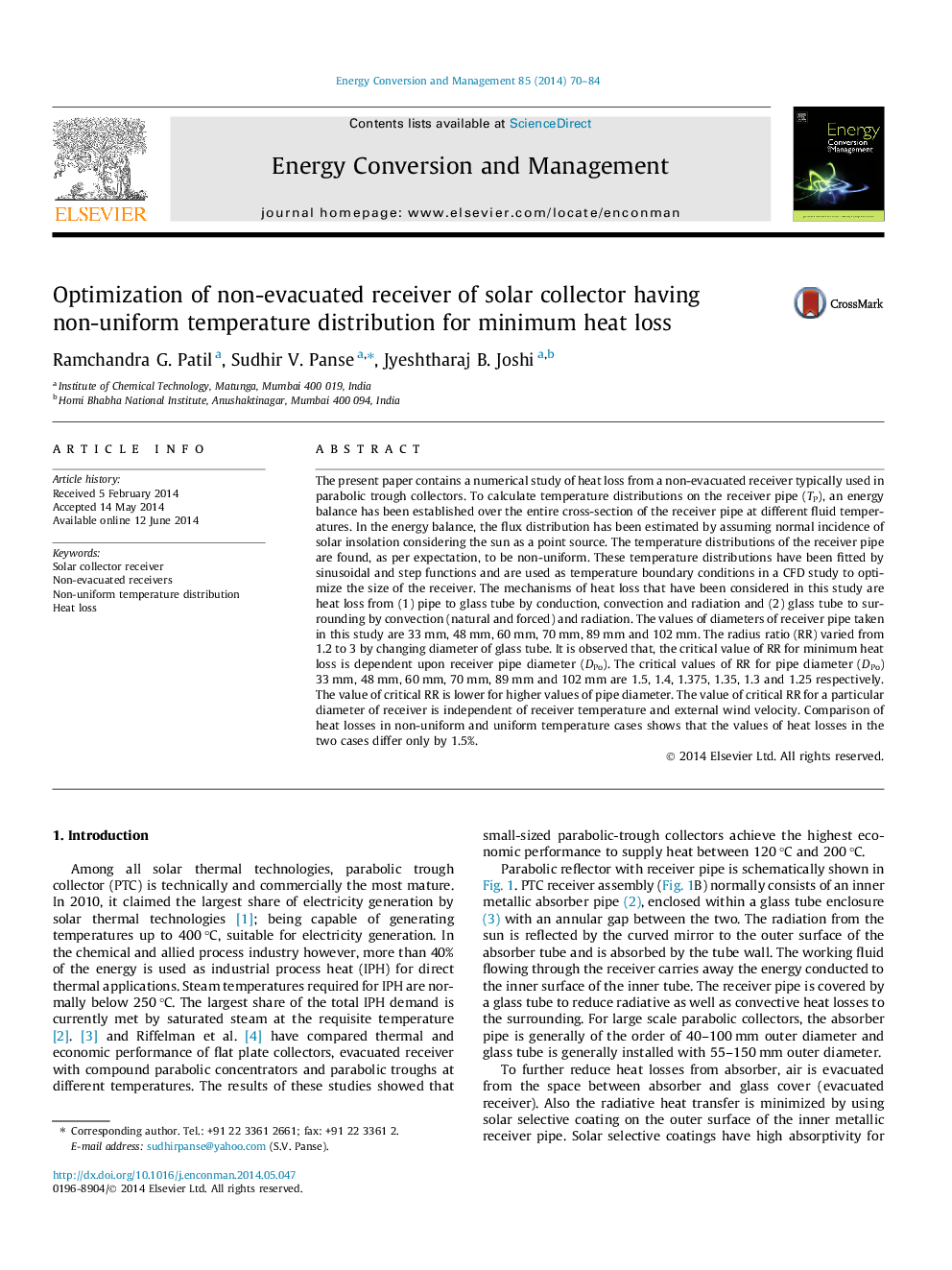| Article ID | Journal | Published Year | Pages | File Type |
|---|---|---|---|---|
| 7164680 | Energy Conversion and Management | 2014 | 15 Pages |
Abstract
The present paper contains a numerical study of heat loss from a non-evacuated receiver typically used in parabolic trough collectors. To calculate temperature distributions on the receiver pipe (TP), an energy balance has been established over the entire cross-section of the receiver pipe at different fluid temperatures. In the energy balance, the flux distribution has been estimated by assuming normal incidence of solar insolation considering the sun as a point source. The temperature distributions of the receiver pipe are found, as per expectation, to be non-uniform. These temperature distributions have been fitted by sinusoidal and step functions and are used as temperature boundary conditions in a CFD study to optimize the size of the receiver. The mechanisms of heat loss that have been considered in this study are heat loss from (1) pipe to glass tube by conduction, convection and radiation and (2) glass tube to surrounding by convection (natural and forced) and radiation. The values of diameters of receiver pipe taken in this study are 33Â mm, 48Â mm, 60Â mm, 70Â mm, 89Â mm and 102Â mm. The radius ratio (RR) varied from 1.2 to 3 by changing diameter of glass tube. It is observed that, the critical value of RR for minimum heat loss is dependent upon receiver pipe diameter (DPo). The critical values of RR for pipe diameter (DPo) 33Â mm, 48Â mm, 60Â mm, 70Â mm, 89Â mm and 102Â mm are 1.5, 1.4, 1.375, 1.35, 1.3 and 1.25 respectively. The value of critical RR is lower for higher values of pipe diameter. The value of critical RR for a particular diameter of receiver is independent of receiver temperature and external wind velocity. Comparison of heat losses in non-uniform and uniform temperature cases shows that the values of heat losses in the two cases differ only by 1.5%.
Related Topics
Physical Sciences and Engineering
Energy
Energy (General)
Authors
Ramchandra G. Patil, Sudhir V. Panse, Jyeshtharaj B. Joshi,
